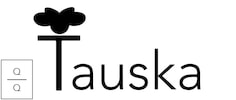 Last week our cohort (MA and MFA students of Transdisciplinary New Media at the Paris College of Art) were with one of our faculty professors and mentors in her city of Porto, Portugal. We spent the week eating, resting, visiting the university of fine arts and meeting other MFA students for collaboration. And it was great. One of the largest highlights of the week included a visit to the Museum of Contemporary Arts, the Serralves, to see the show “I’m Your Mirror” by Portuguese contemporary artist Joanna Vasconcelos. Also at the museum were shows of works by Joan Miro, Tacita Dean, and Susan Hiller. Basically it was awesome!! Plus the museum and its grounds are all spectacular so I think I want to live at this museum. The buildings of the museum are spacious, with large windows framed like paintings and allowing in a lot of greenery and sunshine. The architect, Alvaro Siza Vieira, did a brilliant job, and won many awards for the design. The exhibits were not too full or empty and most pieces were well spaced out and well lit. I especially enjoyed the pieces integrated into the gardens because it is always wonderful to see art and nature come together. Most of those pieces were from the show of Joanna Vasconcelos. Side note - I don’t know what it is about big rings and especially wedding ring sculptures, there seem to be a lot of those around these days. I thoroughly enjoyed most of the works in the shows, however the piece that stood out for me most, which ended up being the work I sat in for over an hour was the one room installation work of Susan Hiller, Thoughts Are Free. 2012. Interactive installation. Upon entry to the room, it felt a little banal and basic. Lyrics in black covering white walls. A juke box down the stairs into the second crescent of a round room. Near the juke box, two benches on either side arranged with headphones and the same book over and over, spaced out. Seems basic right. And then I read about the piece and began to actually look at the lyrics. The lyrics all came from protest songs around the world, in the standing up for rights and against wars and violence and inequality. Though languages and words differed song to song and era to era, from whichever country each song came from, the messages remained essentially the same, loud and clear and calling for peace, and equality. The jukebox played the songs into the headphones so that one could sit and listen to the songs. And the books, all had the lyrics of all the songs from the walls, and almost each song had below its lyrics, a short history of the song, its writer, and the songs origin. I must have sat there reading the book cover to cover and listening to twenty plus songs for over an hour. Together the lyrics and stories are overwhelming and thought provoking. Provoking because when one comes to understand that the majority of humanity from all over the world just want peace and freedom, at any given time generally; why so many songs? Why so many eras? Why so many countries? And especially what can be done? Can we do anything? And what more can we learn about humanity from this particular assemblage of information?
0 Comments
Leave a Reply. |
AuthorHello! I am Tauska, nice to meet you. I love creating children's books. On this blog I write about my projects and books, processes, passions and education. Feel free to get in touch and, or say hello! Archives
April 2021
Categories
All
|



 RSS Feed
RSS Feed
